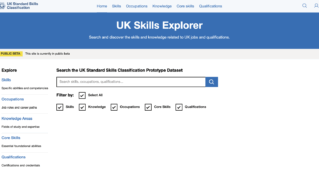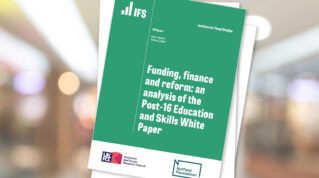With T Level and A-level results day fast approaching, young people across the country will be thinking about what comes next.
I wish them all the very best and want to particularly salute T Level learners for choosing what is still a relatively new but exciting education route.
These enterprising young people put their faith in a winning package. T Levels are quality, employer-designed pathways into rewarding careers, backed up by substantial industry placements.
Now, they deserve more than just congratulations. A healthy proportion of T Level students go straight into jobs after collecting their results, often following up on their work placements. But many progress to higher-level training and need the full support of a forward-looking skills system.
I’m extremely proud to be chair of Skills England, where we are lucky enough to work with expert employers, who understand their sectors and contribute outstanding insights and knowledge to help shape apprenticeships and other training. We are also committed to co-creating solutions with FE and HE providers, regional partners, and departments across government.
Skills England’s success will be built from outstanding partnerships and we will always be prepared to listen and learn.
But while the benefits of harnessing all that first-hand expertise are huge, it’s also vital that our work follows the evidence. We must and will be data-driven.
Learning the right skills
We have today published a new report: Assessment of Priority Skills to 2030. It analyses future employment needs across ten critical sectors, aligned with the government’s industrial strategy and plan for change.
Our findings show that demand for jobs in priority occupations is expected to grow significantly by 2030.
Jobs in areas such as digital, adult social care, construction, and engineering will experience some of the biggest increases in demand.
Added to this, the report highlights the scale of demand.
Over a quarter of a million people enter priority occupations from the skills system each year. Those are vast numbers, and we need to double down on making sure they learn the right skills.
It is also important to recognise the levels of training required. Our analysis found that one-third of the projected extra demand in priority occupations will need workers with a career entry-level qualification. The rest will require higher-level qualifications and training that many of the young people about to get their T Level and A-level results will soon be progressing to.
This is the third major publication from Skills England.
In September 2024, we published Driving growth and widening opportunities, which outlined how skills can drive UK growth, along with an initial assessment of skills needs in the economy. An important insight I drew from this was that far too many employers and learners found the skills landscape baffling. The system is too complex and fragmented. Skills England will help simplify it.
In June 2025, we published Skills England: Skills for growth and opportunity. This summarised findings of our analysis and engagement on the growth and skills offer, and skills needs assessments for the 10 priority sectors. Key takeaways from this included that apprenticeships needed to be more responsive and flexible.
No room for complacency
Together, the three publications amount to a major step forward in our understanding of the skills landscape.
However, there is no room for complacency.
With seismic shifts in technology — particularly the accelerating impact of AI — the shape of our economy is in flux. That’s why Skills England is doubling down on future planning, continuously monitoring emerging trends and refining our thinking as fresh data becomes available.
It’s about staying ahead of the curve and providing the nation’s future workforce, including the wonderful young people who will be receiving their results in the coming days, with the skills they will need to succeed.















Shocking but not unsurprising to overlook all the vocational students studying non-T level. These students have worked hard and deserve recognition. Perhaps the chair of Skills England should reach out to these students instead of ignoring them. It’s poor.